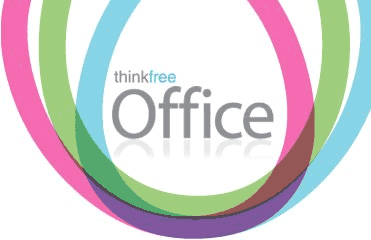Lauded by some, despised by others, ThinkFree Office has clearly made an impression among Mac users – but what exactly does free mean? And do you get what you pay for?
If there’s a single point to The Low End Designer, it’s to spread the message that despite the amazing graphics capabilities of the Mac and the latest flashy software, from Photoshop CS to Maya, the fundamental element of all graphic design is text – and that text must be well presented.
With this in mind, we’ve spent a fair amount of time looking at various text editors and word processors. The Low End Designer isn’t for one minute suggesting that you perform layout tasks in a word processor. It’s just that getting your text right before you fire up Quark or InDesign is absolutely essential.
The dominant word processors on the Mac are Microsoft Word – powerful, but expensive and often counterintuitive – and AppleWorks – bundled free with many Macs, but showing its age. It is always nice to look at the alternatives
 And so we come to ThinkFree Office. ThinkFree has come in for serious criticism from readers of the Low End Designer. We first ran a quick review of ThinkFree Office in Kill Bill: 12 Alternatives to Microsoft Word. One reader in particular, Katherine May, had massive problems using the application, most particularly with the editing of pasted text. It’s about time we took a deeper look at this application.
And so we come to ThinkFree Office. ThinkFree has come in for serious criticism from readers of the Low End Designer. We first ran a quick review of ThinkFree Office in Kill Bill: 12 Alternatives to Microsoft Word. One reader in particular, Katherine May, had massive problems using the application, most particularly with the editing of pasted text. It’s about time we took a deeper look at this application.
Think free? Think again. Think $50. ThinkFree Office 2.2 isn’t free in the sense of no-cost, nor free as in open-source. Rather, the developers mean that if you use their product, you’ll be free of the Redmond tyranny.
Publisher’s note: This article is from 2004, ThinkFree Office is up to version 4, and Macs not run dual-core (or more) Intel processors, so speed issues may be a thing of the past.
One of the big attractions of ThinkFree Office is that it’s a Java application and should, in theory at least, be the same on different computing platforms regardless of operating system. We tested it on Windows XP, Linux, and Mac OS X and found the app to be more or less identical.
So what’s the catch?
It’s a Java application, that’s what the catch is. Anyone who has ever suffered the indignities of using the slothful Java peer-to-peer file sharing application LimeWire will now be putting their money back in their wallets. This isn’t really fair, but it is understandable – so many Java apps have been an appalling disappointment.
However, there are also some good Java apps such as the image manipulation program ImageJ.
In terms of speed, ThinkFree Office resides somewhere between the two: It’s reasonably zippy for a Java application, but only if you have a blazingly fast Mac. If you have anything less than a G4, forget about it. Not exactly praise from Low End Mac’s perspective, I think you’ll agree.
There is certainly of an issue with slowdown when you’re typing. Rather disappointingly, on a G3 Mac it is possible to type faster than the software can display your text, which is unfortunate when you consider that we were all able to word process on Commodore 64s, BBC Micros, and Apple IIs in the past.
Maybe the app has been updated since I tried it in May, but we didn’t encounter any text pasting and editing problems during our tests.
ThinkFree Corporation have gone to some lengths to make their productivity suite as Office-like as possible. Once you’re up and running, it’s fairly easy to forget you’re not running Redmond’s finest.
What you’ll never forget is that you’re not using a true Mac application – it just feels like a Windows program (when we said Office-like, we meant Office for Windows, not Microsoft’s odd, but ultimately Mac-like, OS X version.)
As this is The Low End Designer, we didn’t investigate the other modules too deeply, but the spreadsheet and a presentation packages give the impression of being as solid, yet unpolished, as ThinkFree Write. Where it counts, the app really works – importing Microsoft Office documents.
It does lack a database, which will be an inconvenience for some. Even a simple flat-file database would have been a useful addition.
ThinkFree comes with a bonus collection of clip art, as dubious as always but no more aesthetically offensive than any other collection, and doubtlessly someone will make use of it to produce “hilarious” memos. Part of ThinkFree’s strategy is to sign users up to their iDisk-like online storage facility, Cyberdrive. Some may find this subscription-based feature useful, but the rest of us can safely ignore it.
Overall, the application could do with a bit more polish, but it’s basically sound.
PREVIOUS: Scribus, Another Alternative to Quark and InDesign
NEXT: Preparing Your Mac for Scribus with X11 and FinkCommander
Keywords: #thinkfreeoffice #thinkfreewrite
Short link: http://goo.gl/GHgOjx
searchword: thinkfreeoffice

